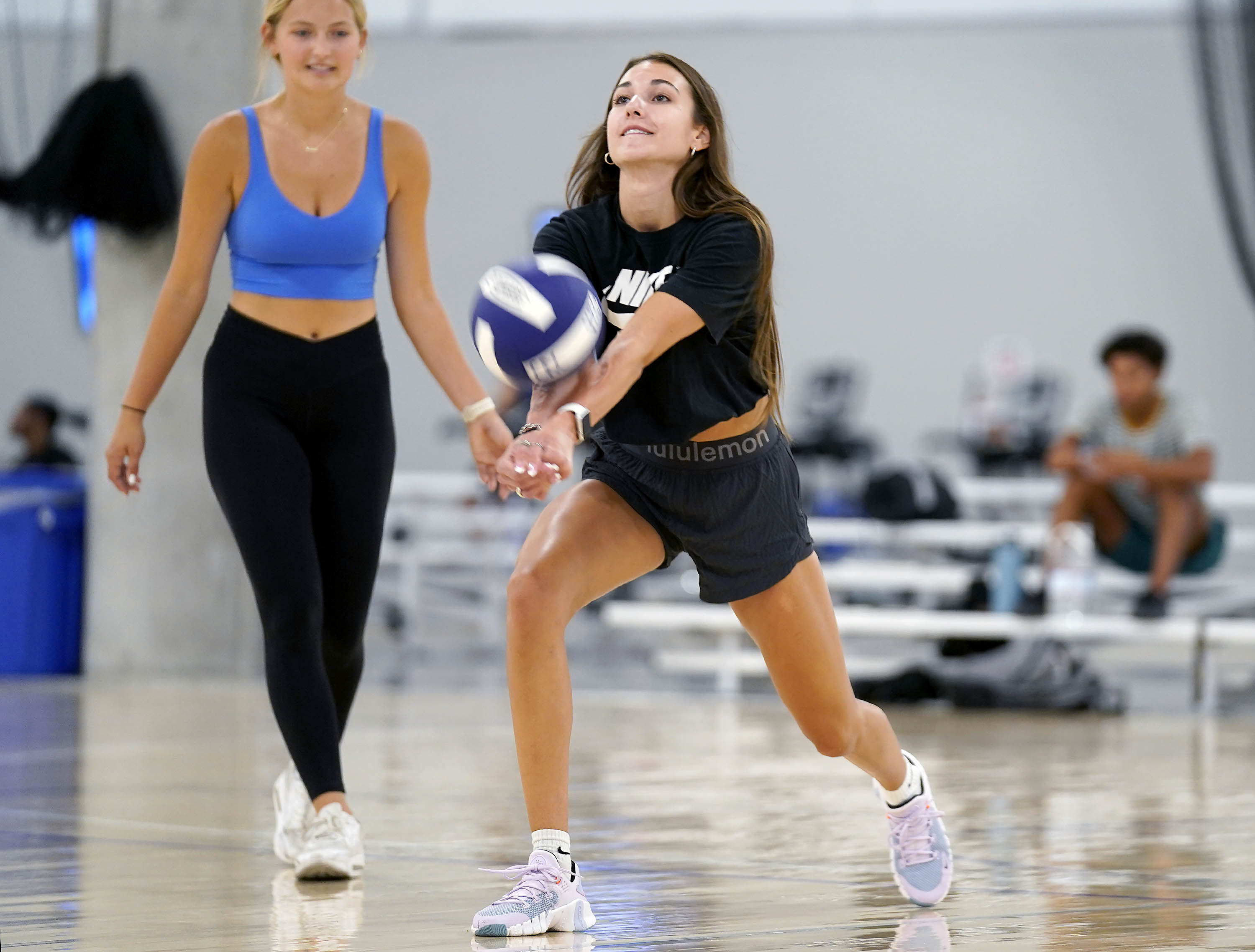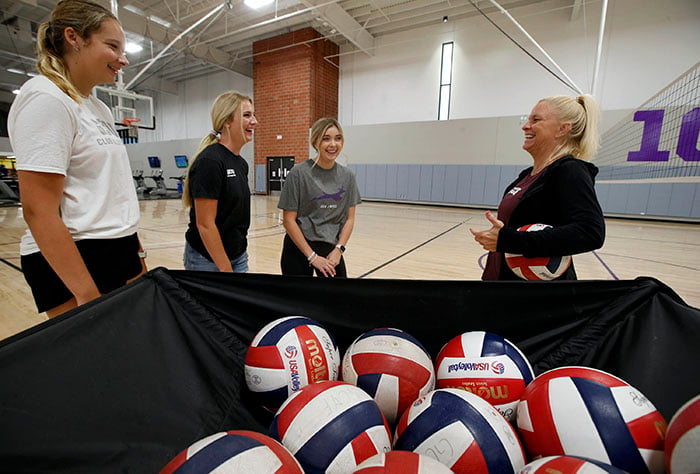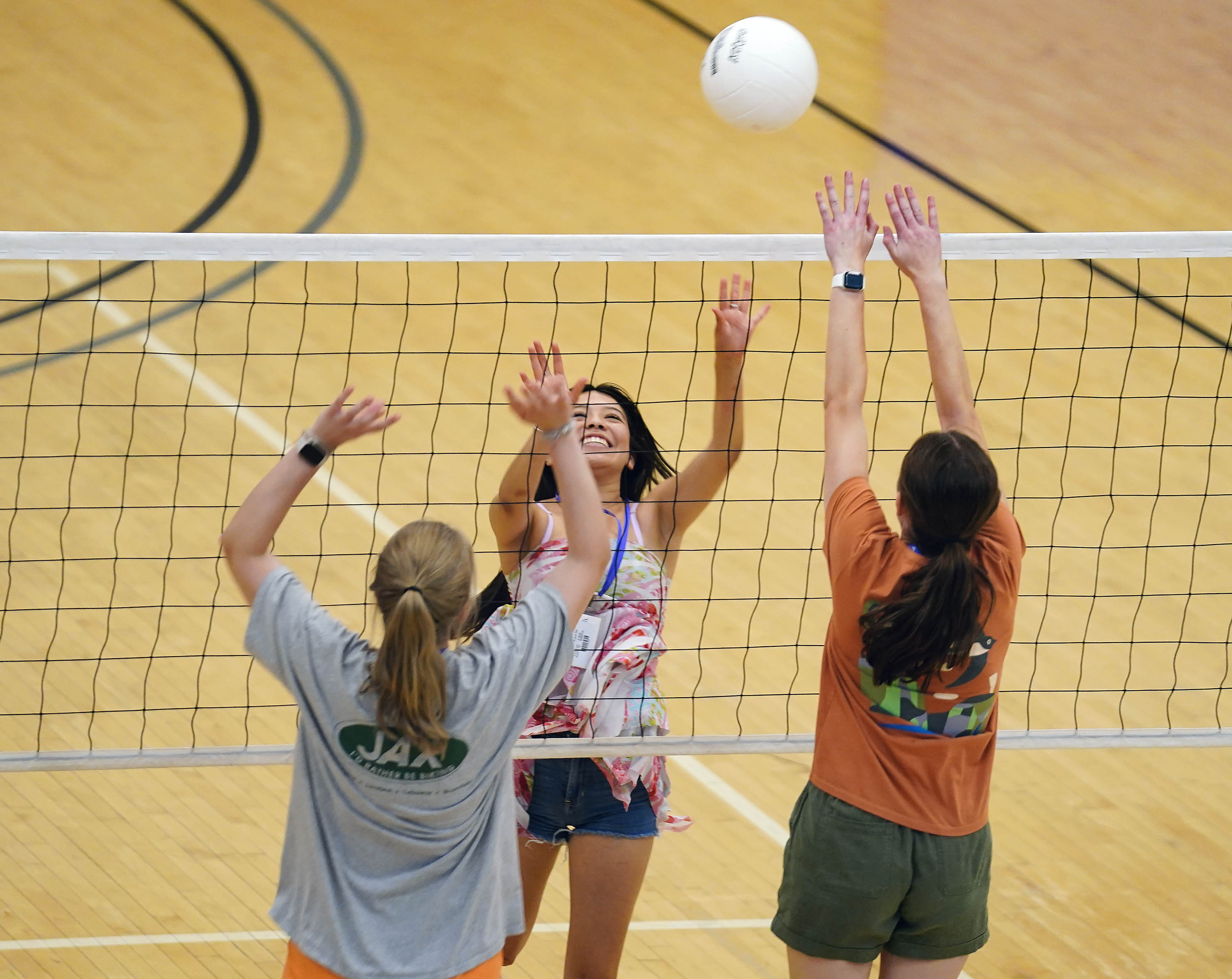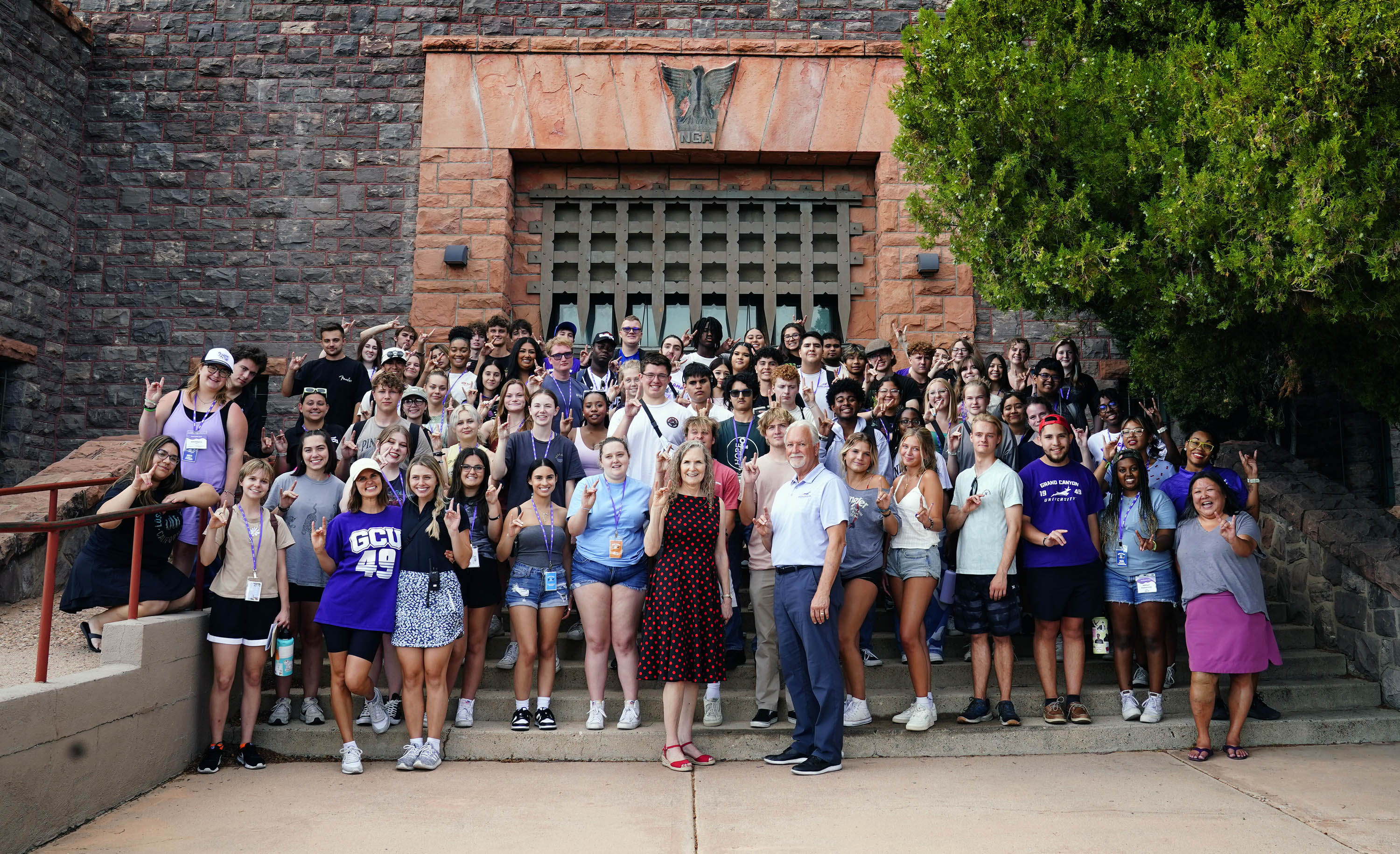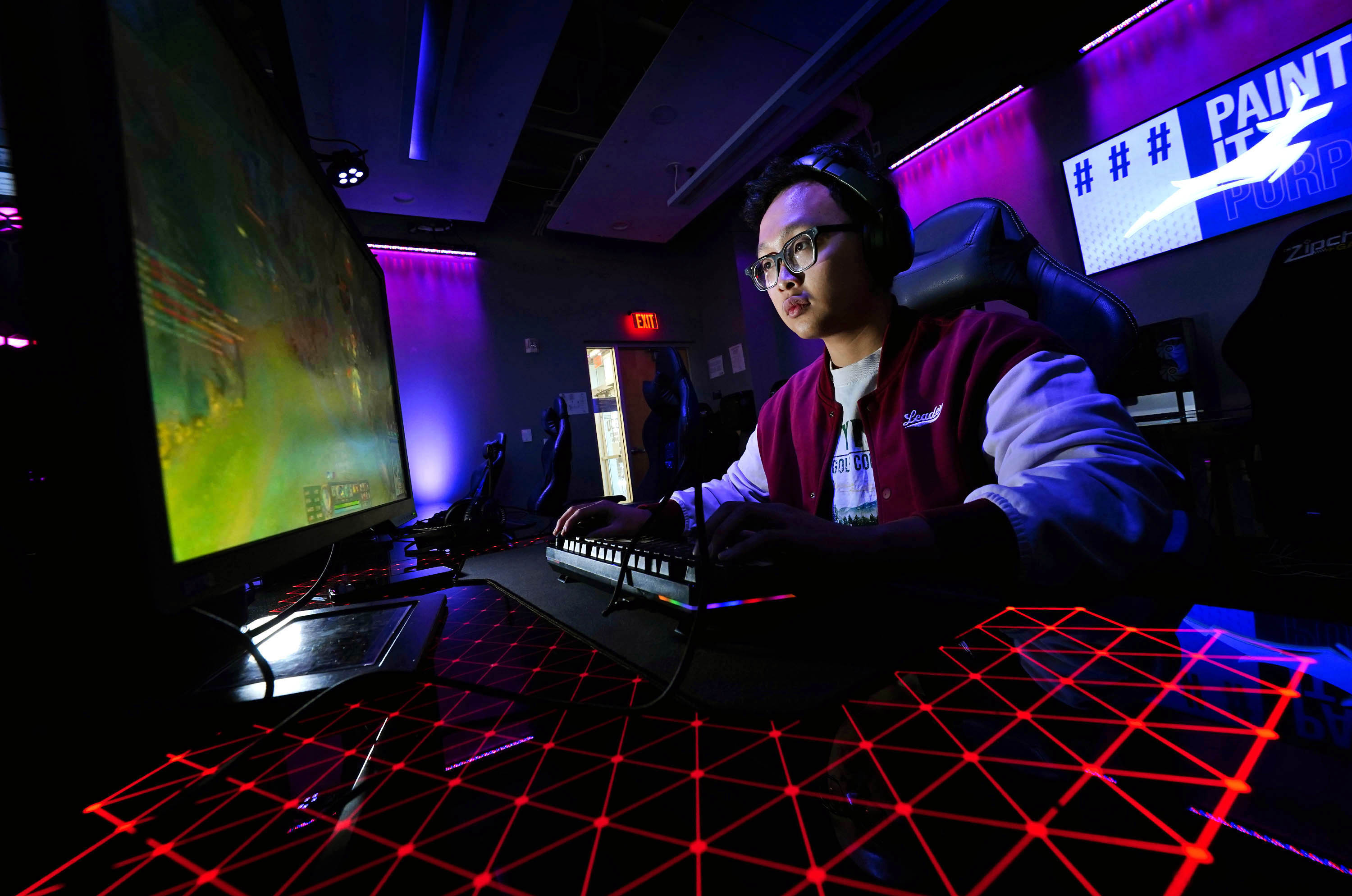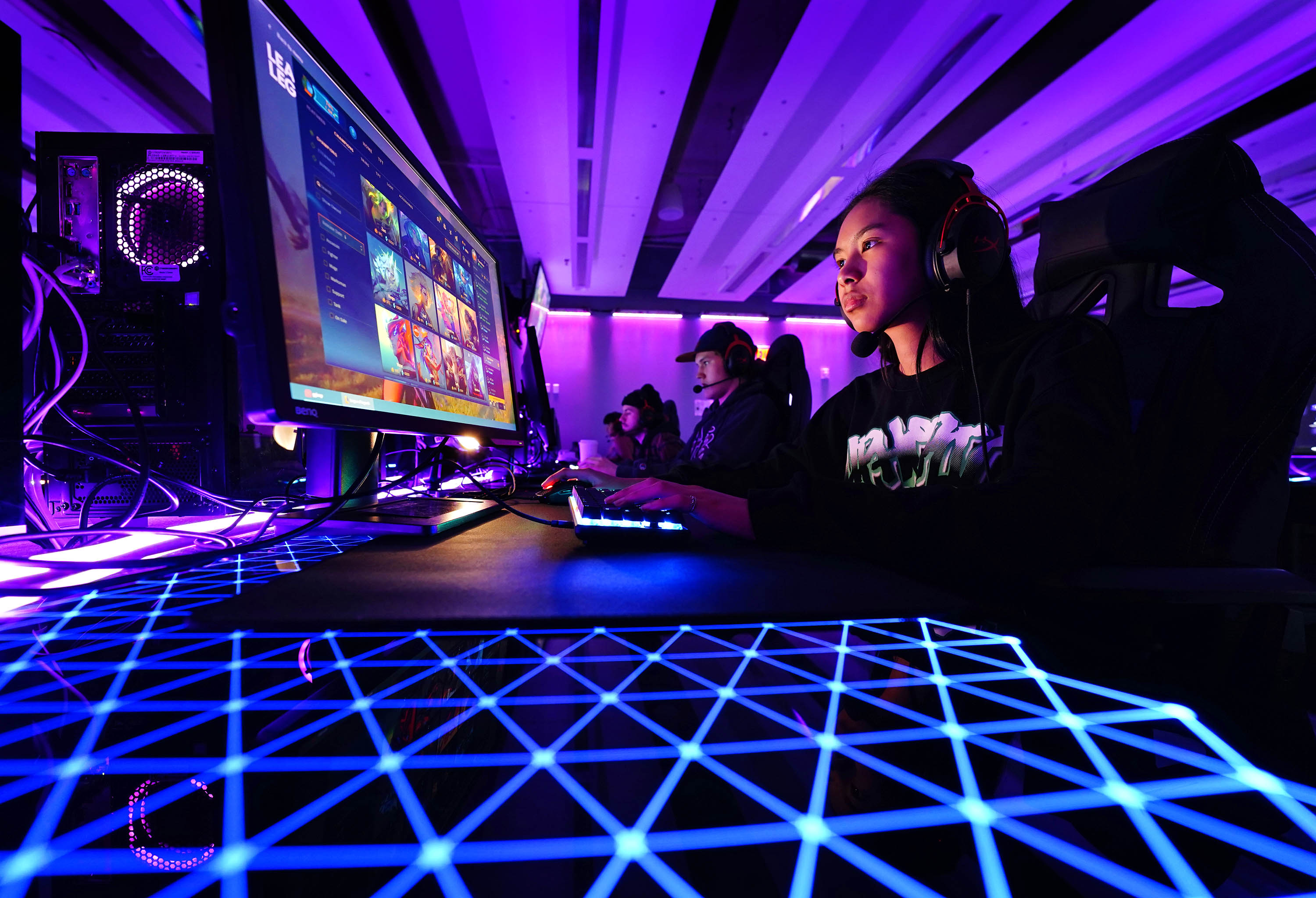
Editor's note: This article originally appeared in the April issue of GCU Magazine. To view the digital version of the magazine, click here.
Photos by Ralph Freso
Jack Utzerath stands among dozens of snaking cords connecting microcomputers to big computers to screens, all operated by his fellow computer science majors. Yet he wants to talk about mental health.
He said he has a “bunch of technical skills” but wants to use them for good.
“With this project, we can have tangible outcomes in the world. We are optimizing telecare and skills that actually matter,” Utzerath said of a research project led by Dr. Isac Artzi, associate professor of computer science at Grand Canyon University.
Eight students and Artzi meet weekly to develop technology tools and artificial intelligence methods to aid counselors in their mental health diagnoses. An array of computers, cameras and recording devices populate the AI Lab in the Technology Building, where students work on such things as emotional analysis programs.
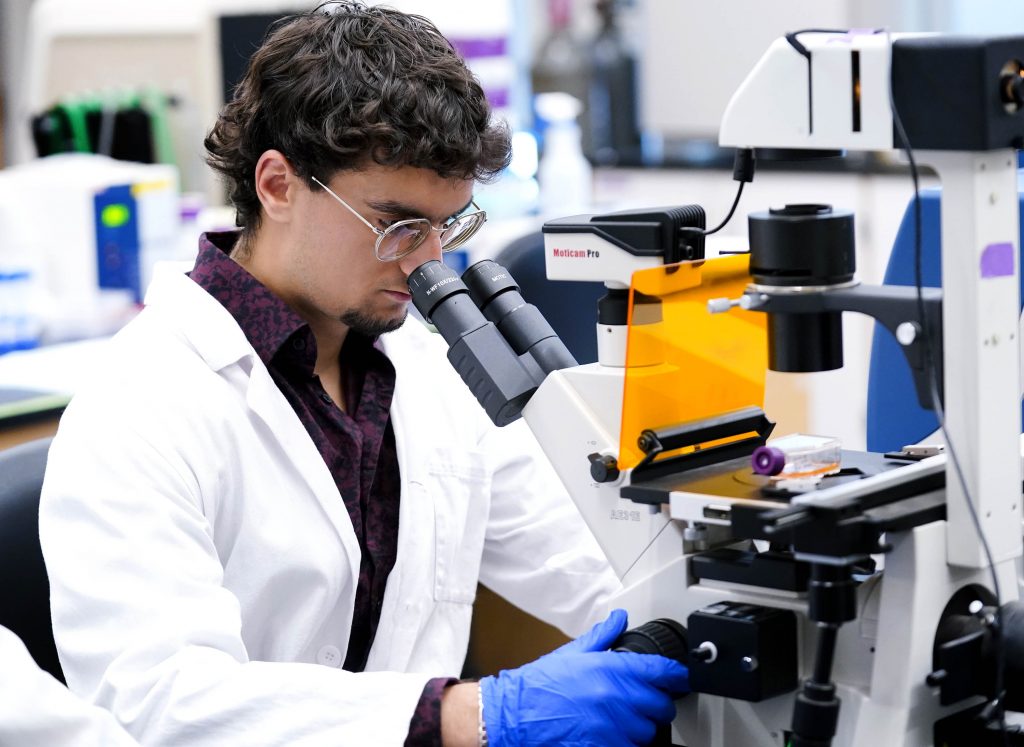
They’re delving into this research to help counselors understand the mental state of a patient by analyzing journal entries and conversations and evaluating patients to prioritize interventions. At its best, these technology tools could scrutinize patient voice patterns and tones and facial expressions – all while surrounded by an interactive video created by the counselor and client.
Imagine a counselor who receives a weekly report of the collected data, in graphs, that shows the moods and emotion changes of a client?
“I don’t have to spend time asking you how you are feeling (because an assessment already has been done for you). That is augmenting counseling,” Artzi said. “Right now, a typical caseload for counselors is 20 to 30 a week. If they have this, they can have hundreds of people, and the system can prioritize who should be seen before others when resources are limited.”
The project is one of many conducted by the Computational Science Exploratorium, which is doing research in three areas: virtual reality, intelligent robots and AI/machine learning.
And it’s just one of a dozen undergraduate research groups partaking in more than 30 projects in GCU’s Research and Design Program (RDP), growing rapidly since its launch in 2016.
GCU is not a designated R1 research university, but its academic leaders wanted to give undergraduate students the opportunity to do research — something students often don’t have the chance to do extensively until graduate school.
College of Natural Sciences Associate Dean Dr. Jon Valla said RDP was launched with mostly science students to help them be more competitive in graduate school acceptance and still is its principal goal.
“The key piece — especially for med school, pharmacy school, physical therapy school — is students competing for entry really need to have a well-rounded application, and research experience is a significant part of that,” he said.
GCU has long emphasized its faculty’s classroom teaching, spending a lot of time with students instead of conducting their own research and chasing grants.
“But we wanted to offer this experience to our students, nonetheless. And for faculty, it’s another aspect of their job that they enjoy, and it’s completely voluntary for them, so it’s a win-win,” Valla said.
With faculty mentors by their side, around 400 students this year are helping with fascinating research in neuroscience, exercise science, rocket design, medical products, biomechanics, the environment, molecular biology, antimicrobials and even creating energy sources from bacteria.

Undergraduate research is growing beyond the sciences and the College of Engineering and Technology. Canyon Emerging Scholars, an umbrella for all undergraduate research in its inaugural year as a pilot program, includes research labs in every college. For example, psychology research is underway in the College of Humanities and Social Sciences (CHSS).
Students showcased their work in the Canyon Undergraduate Research Conference in April and have the opportunity to be published in the Canyon Journal of Undergraduate Research, launched in 2023.
It all means that students like Blake Pierce can get a leg up on their future. Pierce and David Novak were with Artzi’s group recently, showing off the initial stages of use of generative AI in conventional therapy offices.
First, an immersive environment is created with high-resolution, 360-degree displays, often with a patient’s choice of a “happy place,” such as a mountain or sea landscape. Then audio and visual data is collected, for example, analyzing voice for stress or sadness or facial expressions for joy.
It all serves to help the therapist gather information needed to assist a client and potentially eliminate biases. A student talks into the machine, and it spits out a graph on how he is feeling – neutral with some sadness mixed in.
“It’s hard when you are a student. It always thinks you are sad,” said Pierce, describing typically flat tones from a male voice or the fact they are simply tired. “But the more you do it, the better it gets.”
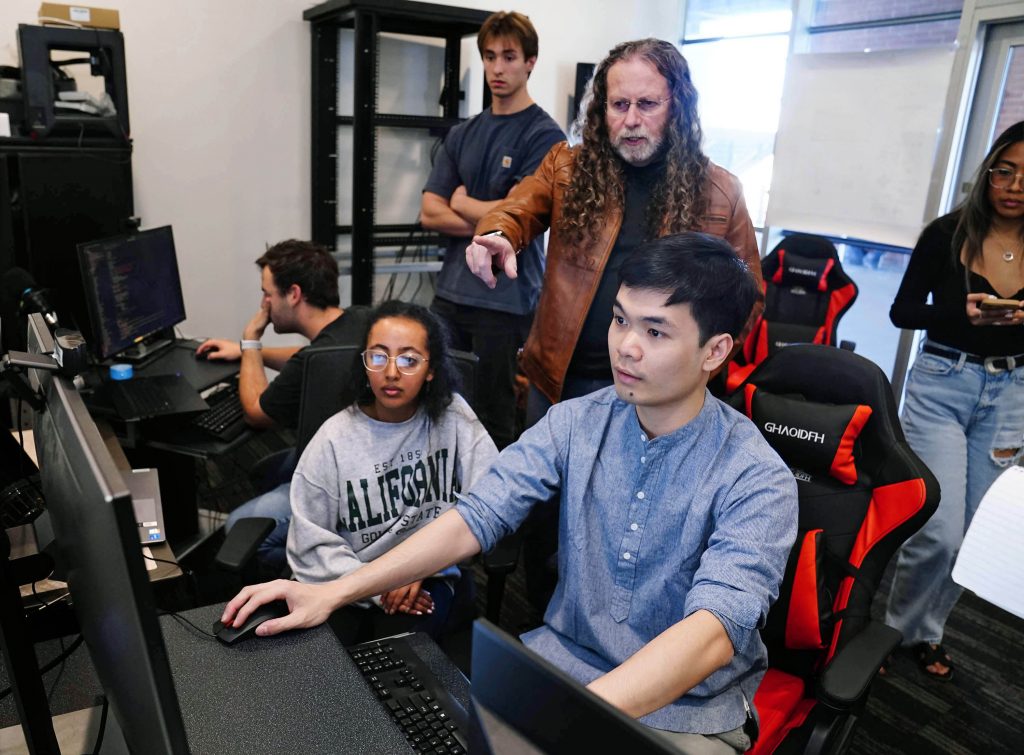
Students Mahlete Legesse and Duc Vo demonstrated how another program can read the words of a patient’s journal and put the data in a graph. “The graph shows the changes of every emotion over time,” said Vo. “You can see sadness here. When the psychologist looks over it, they can talk it over and find out what is happening.”
When the technical aspect is worked out, Artzi will enlist behavioral health experts in CHSS to refine it.
Already, the project has helped Pierce.
“Essentially this research helped me get into grad school … I got into MIT,” he said.
Other projects that are years in the making have yielded promising preliminary research. One of the largest number of students, a dozen or more at a time, continue work in the Antimicrobial Discovery Lab led by Dr. Ramesh Velupillaimani. One of the projects is investigating desert plants to combat infectious diseases.
And what Valla calls the most productive group is the Performance Optimization, Wellness and Exercise Research (POWER) Lab, led by Dr. Zachary Zeigler.
“We have 130 active students in this. I take pride in that,” Zeigler said. “Any students who are willing to put in the work can join a research project and see it through to presentation or publication. That’s the goal.”

That happened during the pandemic. Zeigler led the publication of research on the effects of exercising with a mask and weight gain during COVID.
“It was cited more than 600 times by other researchers because we were the first,” he said.
What they found was that the pandemic lockdowns just reinforced prior behaviors in eating and exercise and that wearing masks made little difference in muscle oxygenation and cardiovascular outcomes.
The students who helped collect data and write it for publication gained valuable experience, he said.
This gives undergraduates the opportunity to think critically and rely on good science, and that in my mind is what learning is.
Dr. Zach Zeigler, GCU Research and Design Program's POWER Lab
“It is unusual to see an undergraduate who has seen a project through. If you saw a project through data collection and publication, now you are more likely to get in (grad school), but you are also much more prepared,” he said.
Other POWER Lab research includes working with the ROTC on meeting physical fitness standards, analyzing what eating behaviors, body composition and other factors predict their results. They’ve already published three papers on it.
“This is what brought me to the University,” said Zeigler, who after college thought he would work for a large research institution. “But GCU was starting the RDP, working with undergraduates, and I thought, ‘How cool is that?’
“This gives undergraduates the opportunity to think critically and rely on good science, and that in my mind is what learning is. When you are done, hopefully you have learned how to learn.”
That’s happening in the Canyon Neuroscience Group. Its lab started with little to no equipment several years ago and now includes a biosafety hood, incubator, Western blot analyzer, ChemiDoc imaging system and SpectraMax plate reader, among other items in the Technology Building lab.
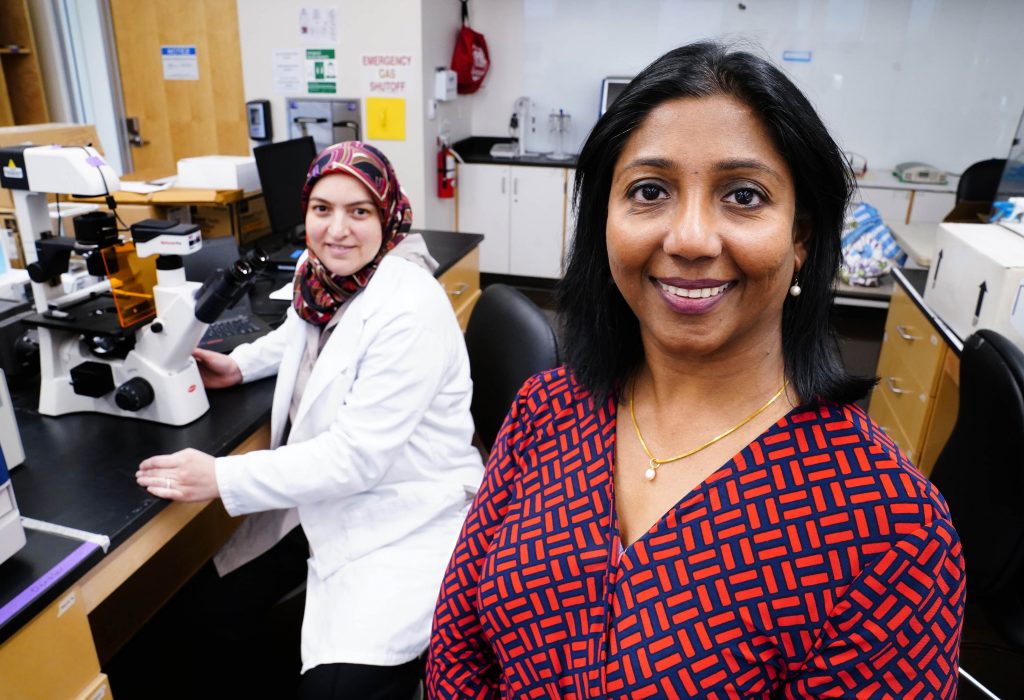
Dr. Sherlin Moses has helped build the lab from scratch. Before its launch, students were resigned to basic literature reviews and theoretical experience but now are performing hands-on research with cell cultures.
“We treat them like babies,” Moses said of the cells. “Students grow them, and they learn how to maintain these cell lines.
“Our group is working on introducing oxidative stress on the cells, and then they try to see what type of changes take place at the protein level of the cells.”
In multiple studies, her group has exposed human neuroblastoma cell lines to conditions that result in inflammatory events, such as Alzheimer’s disease, while others focus on neuroprotective compounds that may help prevent progression of neurodegenerative diseases.
“The mentoring and support we can provide can really go a long way,” she said, citing colleague Dr. Hikmet Nural-Guvener’s work with students in the lab. “Particularly from this group, a few of the students have gone on to work as research techs. When a lab is recruiting students, they prefer those who have hands-on skills.”
Senior Brayden Lamm wears a lab coat and indeed treats the cells like a baby on a recent afternoon. His project is treating the stressed cells with resveratrol, a powerful antioxidant in grape skins, to see if they lower Alzheimer’s markers, he said.
“I’m just really interested in how the human body works, how God’s creation works,” he said. “I’m interested in studying how we can improve people’s lives.”
Working on a research project isn’t like being handed a class lab project and following the directions, added junior Evan Litke, his research partner.
“I really like the creativity. This allows you to think for yourself and problem solve,” he said. “We got to design what we want to look for. In other labs, you’ve got to stick with what the program gives you.
“I worked in a memory care unit with Alzheimer’s patients, so it’s interesting to get to work on this after being surrounded by people who are facing it. It really sparked my interest in solving real-world problems.”
***
Related content:
GCU Magazine: How GCU has embraced the most vulnerable populations
GCU News: Canyon Undergraduate Research Conference was poster perfect
GCU News/GCU Magazine: Students dissect science in high-tech heaven

